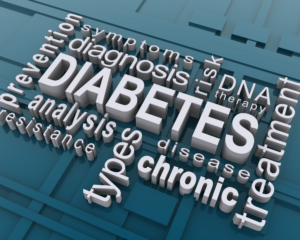Keto Diabetes: How to Manage Type 2 Diabetes with a Low-Carb Diet
Diabetes is becoming increasingly common, and for many people, the standard medical treatments are not offering the relief they need. Fortunately, there is another option that is gaining traction in the medical world: ketogenic dieting for diabetes. By eating a low-carb, high-fat diet, type 2 diabetics can manage their blood sugar levels and even reverse the effects of diabetes.

What Is Keto Diabetes?
Keto diabetes is a form of diabetes management that uses a low-carbohydrate, high-fat diet. This type of diet puts your body into a state of ketosis, which is when your body stops using glucose as its primary source of energy and starts burning fat instead. This helps to regulate blood sugar levels and can even help you lose weight.
Benefits of Keto Diabetes
The benefits of keto diabetes are numerous. Studies have shown that it can help reduce blood sugar levels, improve cholesterol levels, and even reduce the risk of heart disease. Additionally, it can help you lose weight, which can further improve your overall health and reduce your risk for diabetes related complications.
How to Start Keto Diabetes
The first step to starting a keto diabetes diet is to talk to your doctor or dietician. They can help you create an individualized plan that meets your needs and fits within your lifestyle. Once you’ve established a plan with your doctor or dietician, you’ll need to track your macros (carbs, proteins, and fats) carefully to ensure you are meeting your goals. Additionally, you’ll need to make sure you get enough fiber and other nutrients in your diet.
Foods to Eat on Keto Diabetes
When following a keto diabetes diet, it’s important to focus on eating whole foods that are low in carbohydrates but high in healthy fats and proteins. Good sources of healthy fats include avocados, nuts, and seeds. Good sources of protein include eggs, poultry, fish, and legumes. Additionally, it is important to include non-starchy vegetables such as leafy greens, broccoli, cauliflower, zucchini, and asparagus.
Foods to Avoid on Keto Diabetes
On a keto diabetes diet, it is important to avoid processed foods and sugary snacks as these can increase blood sugar levels. Instead, focus on eating whole foods that are low in carbs but high in healthy fats and proteins. Additionally, it is important to avoid alcohol as it can interfere with the effectiveness of the diet.
Conclusion
Keto diabetes is a form of diabetes management that uses a low-carbohydrate, high-fat diet. This type of diet has been shown to be beneficial for managing blood sugar levels and reducing the risk of diabetes-related complications. To get started on this type of diet, it is important to talk to your doctor or dietician for an individualized plan that fits into your lifestyle. Additionally, focus on eating whole foods that are low in carbs but high in healthy fats and proteins.